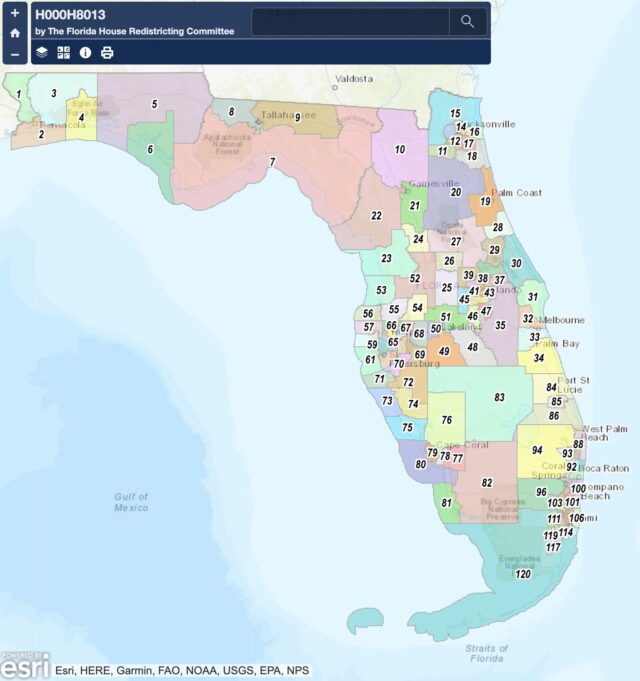
The Florida House Redistricting Committee has voted to send a draft map of Florida’s 120 House districts to the floor.
Through a near party-line vote, the committee advanced the fourth proposed map (H 8013) from House staff.
Only Rep. Anika Omphroy, a Lauderdale Lakes Democrat, crossed party lines to vote yes.
Rep. Tom Leek, an Ormond Beach Republican and the committee’s chair, said the map was the product of months of work. Most importantly, he said, that product came out constitutionally compliant.
“This is one of the most arduous tasks,” he said.
But the process also left Democrats frustrated.
Members voted after a lengthy explanation of changes in the latest draft, updating one advanced by the House Legislative Redistricting Subcommittee last week.
Rep. Joe Geller, an Aventura Democrat and the committee’s ranking member, called for a vote to delay approval of maps until an upcoming meeting, unsatisfied with the time given to review the last draft.
“I’m concerned we have not had enough time to review the most recent changes, with some submissions as recently as Monday, two days ago,” Geller said.
Beyond review time, Democrats reiterated many of the complaints leveled in past meetings that the process did not involve enough public input and did not properly account for growth in minority populations over the prior decade.
On accusations of a rushed process, Leek pushed back fiercely.
“It doesn’t seem all that long ago when many members on this committee and many members of the community and the press were looking at the Senate with awe on how quickly and beautifully they were moving through the process, and wondering why the House couldn’t move as fast as the Senate” he said. “And now I understand that we’re moving too fast.”
Regardless, he said the swiftness was justified to allow the Supreme Court 30 days to review the maps once the Legislature approves a proposal. Should the courts identify problems, approving them in the first half of the regular Session allows lawmakers to address problems without going into overtime.
On Wednesday, the most time was spent on the subject of minority access districts. Groups like Latino Justice and the League of Women Voters of Florida criticized the House map holding 30 minority access districts. That’s the same number as appear on maps approved by the Legislature in 2012.
Miranda Galindo of Latino Justice noted Florida’s Latino population grew from 22% in the 2010 Census to more than 26% in the 2020 Census. Yet around 14% of the districts on the House map are majority Hispanic. Meanwhile, Whites now make-up only 53% of Florida’s population, but 64% of the districts end up with a majority of White voters.
While Omphroy voted in favor of the map and said it generally treats her Broward County region well, she also said it’s discouraging the map would not improve on the benchmark 30 minority access districts in the existing map. She estimated the state should now have as many as 45 minority access seats.
Rep. Fentrice Driskell, a Tampa Democrat, pressed staff as well on the handling of Florida’s growing Haitian American population. She noted one constitutional requirement for maps is that they protect language minorities.
Leek and House staff have said the Constitution also binds the Legislature to rely on U.S. Census data. That doesn’t provide enough information on Haitian populations to conduct a political performative analysis and test the political power of those communities.
He acknowledged the Census’ American Community Survey does estimate population concentrations for Haitian Creole speakers. However, that survey, as opposed to a true census, doesn’t provide the data necessary to then compare voting behavior.
As for the political ramifications of the map, an analysis by MCI Maps shows that of 120 proposed districts, 71 went for Republican Donald Trump in the 2020 presidential election, while Democrat Joe Biden won the 49 remaining areas. Trump won Florida by about three percentage points.
The Florida House currently has 78 Republicans and 40 Democrats, with two vacancies in Democrat-leaning districts.




